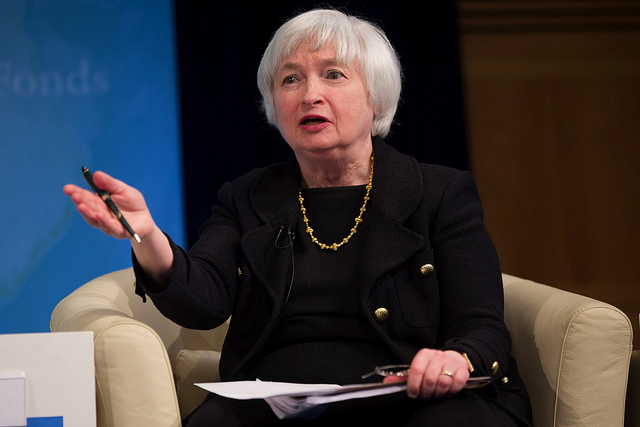
Nobody really knows, but it’s probably not good news for manufacturing.
Economists were abuzz on Wednesday after the Federal Reserve announced that it would raise short-term interest rates for the first time in a decade.
But there was another announcement from the Fed on Wednesday that floated under the radar: Manufacturing production stagnated in November, as a strong dollar and weaker overseas economies have “dampened the demand for U.S.-made goods.” And raising the interest rate will likely strengthen the dollar even more, which will hurt exports and perhaps even encourage more imports.
That’s probably bad for manufacturing, and that’s also probably bad for manufacturing jobs.
The data released by the Fed on Wednesday shows that manufacturing continues to be in a tough spot. Aneta Markowska, the chief U.S. economist at Societe Generale in New York, told Bloomberg Business that manufacturing is “the weakest sector of the economy right now.” Not only is the strong dollar a big factor, but lower energy prices and even the weather is having an impact, Markowska noted.
Interestingly enough, the last time manufacturing was in bad shape like this, the Fed actually unleashed quantitative easing (i.e., pumping massive amounts of cash into the monetary system) to help spur demand.
But by raising the rate this time around, the Fed might end up doing the opposite. The hike in interest rates could push up saving rates, therefore reducing consumption, and may even slow down automobile and house sales. It’s worth noting that the data released Wednesday showed that motor vehicle production last month fell for the first time since August — which Reuters called “a worrying signal for manufacturing.”
And we already know that the manufacturing jobs market is in rough shape. Manufacturing lost 1,000 jobs in November, after losing 8,000 in September and 19,000 in August. (It did gain 2,000 new jobs in October, so that’s something.) If manufacturers find it more difficult to sell their goods overseas, it can be assumed that more job losses could soon follow.
Time will only tell what the exact impact of the Fed’s decision to raise the interest rate will be. But the good news is that we do know that there are steps policymakers can take to help American manufacturing right now, including addressing unfair trade practices such as the dumping of products such as steel into the U.S. market and currency manipulation.
Hopefully we will see action in those areas soon. Our manufacturing workers cannot wait much longer.
